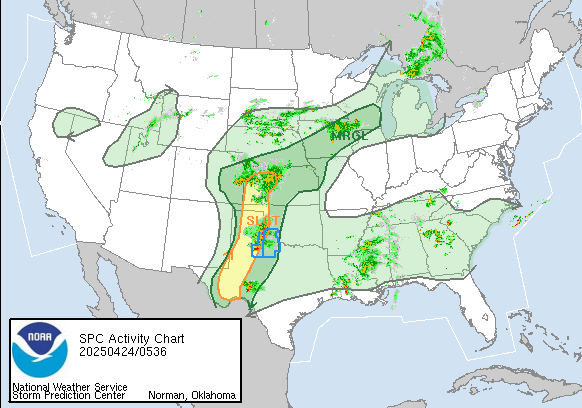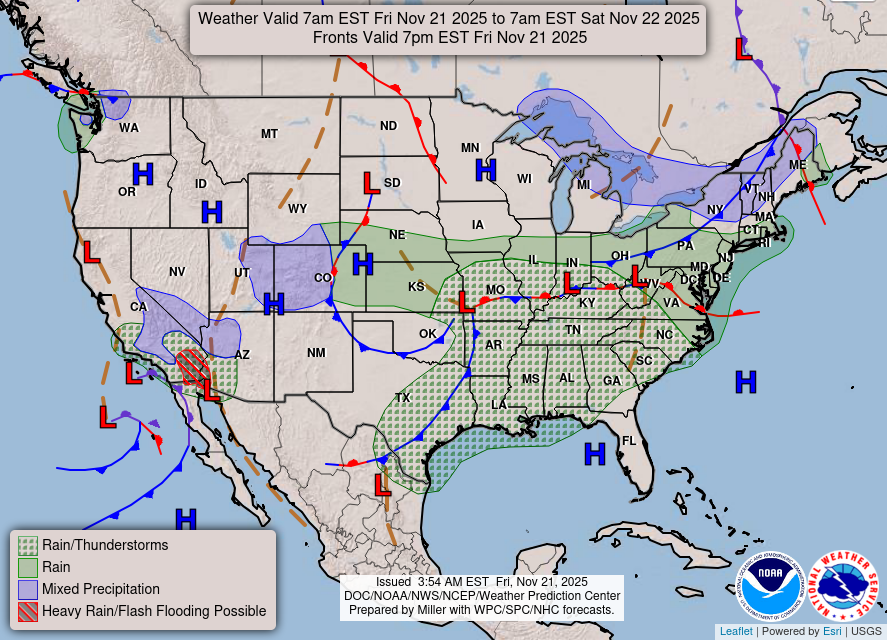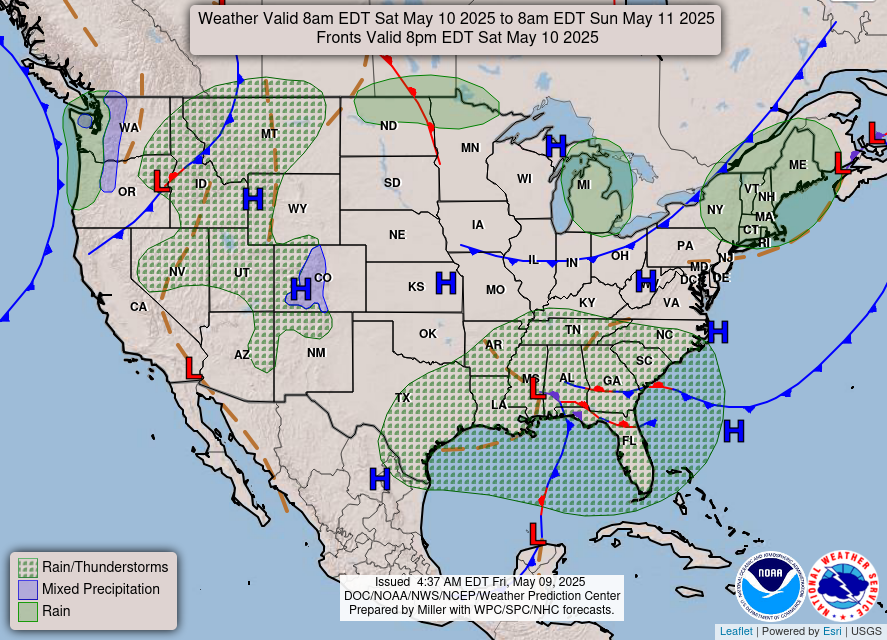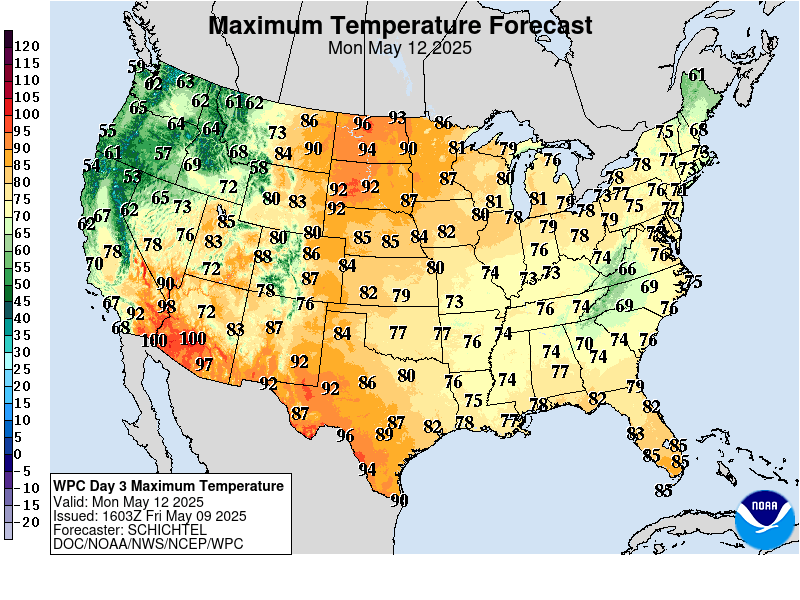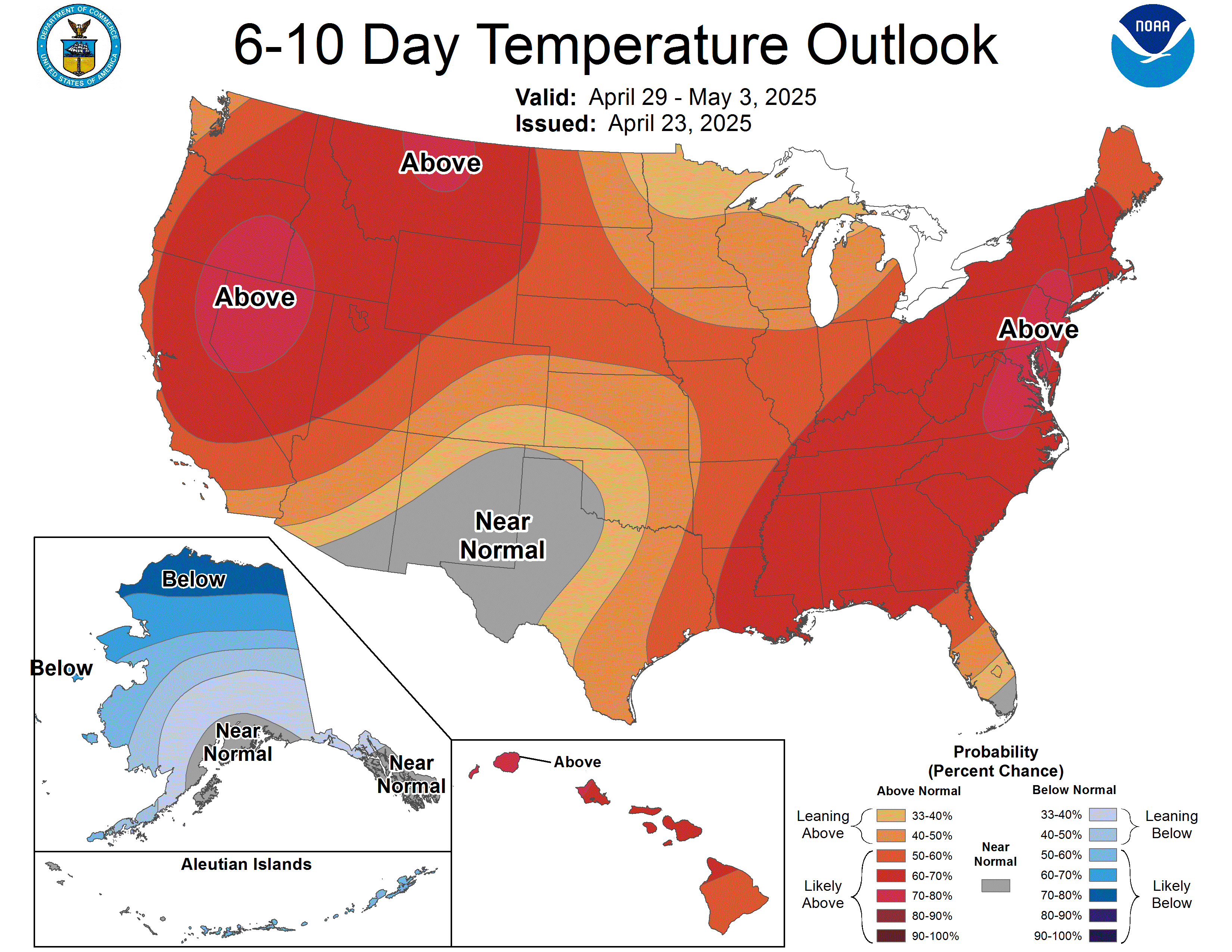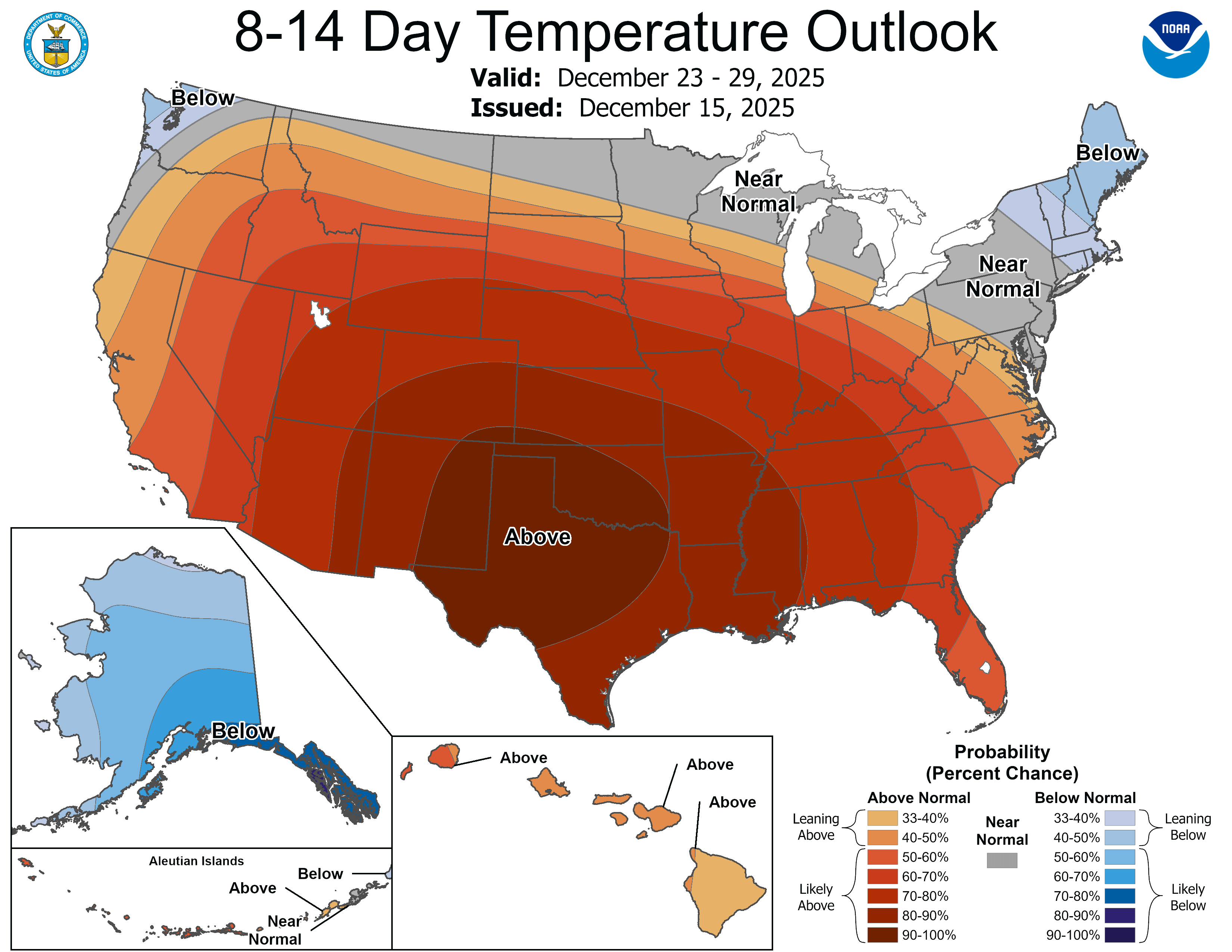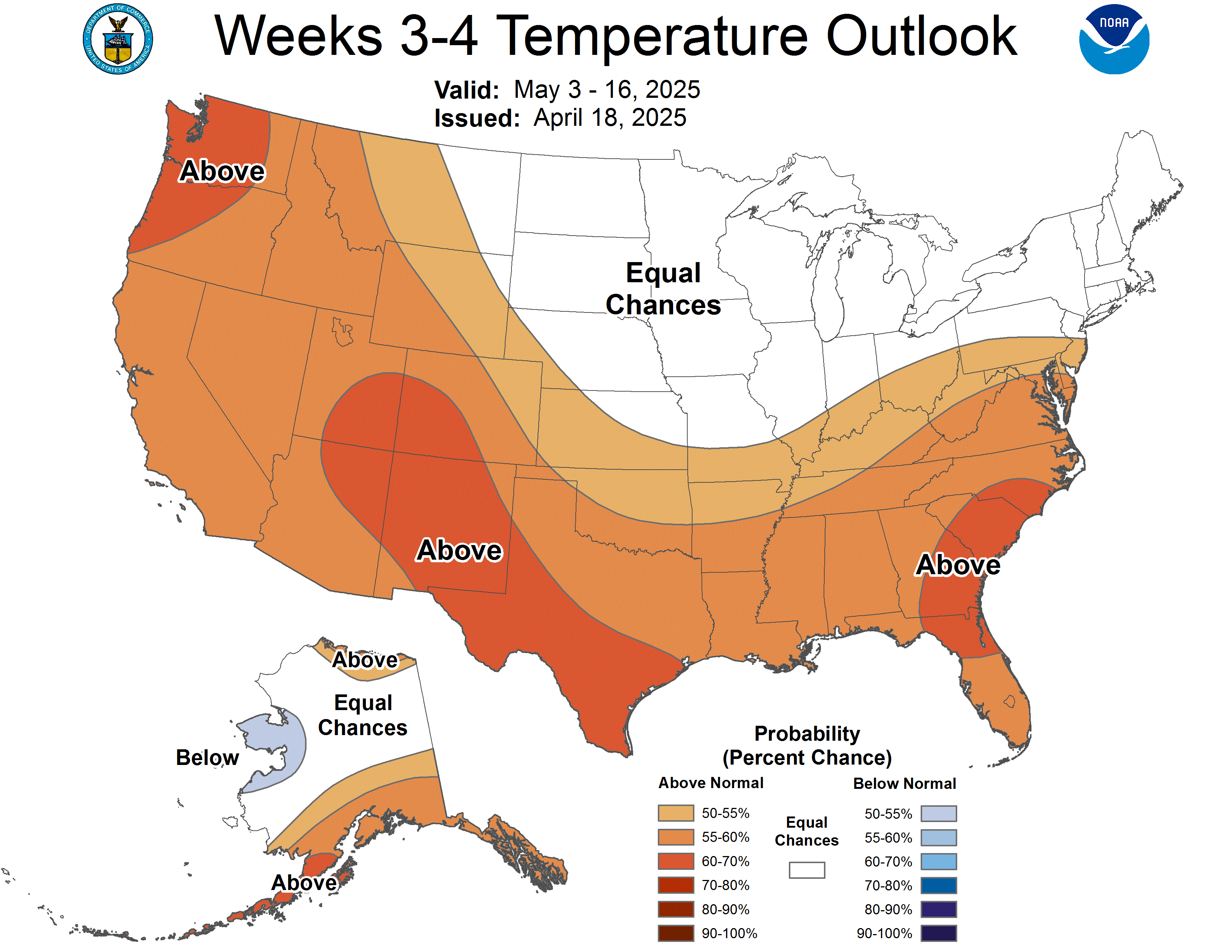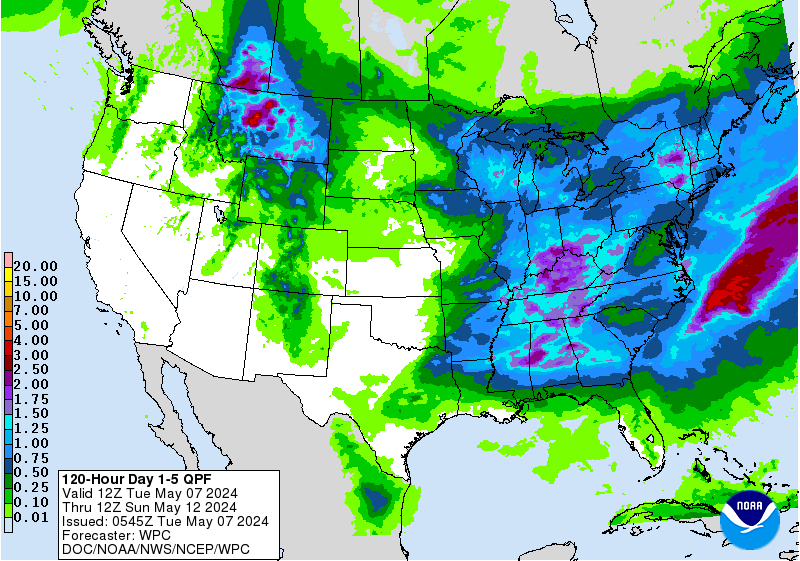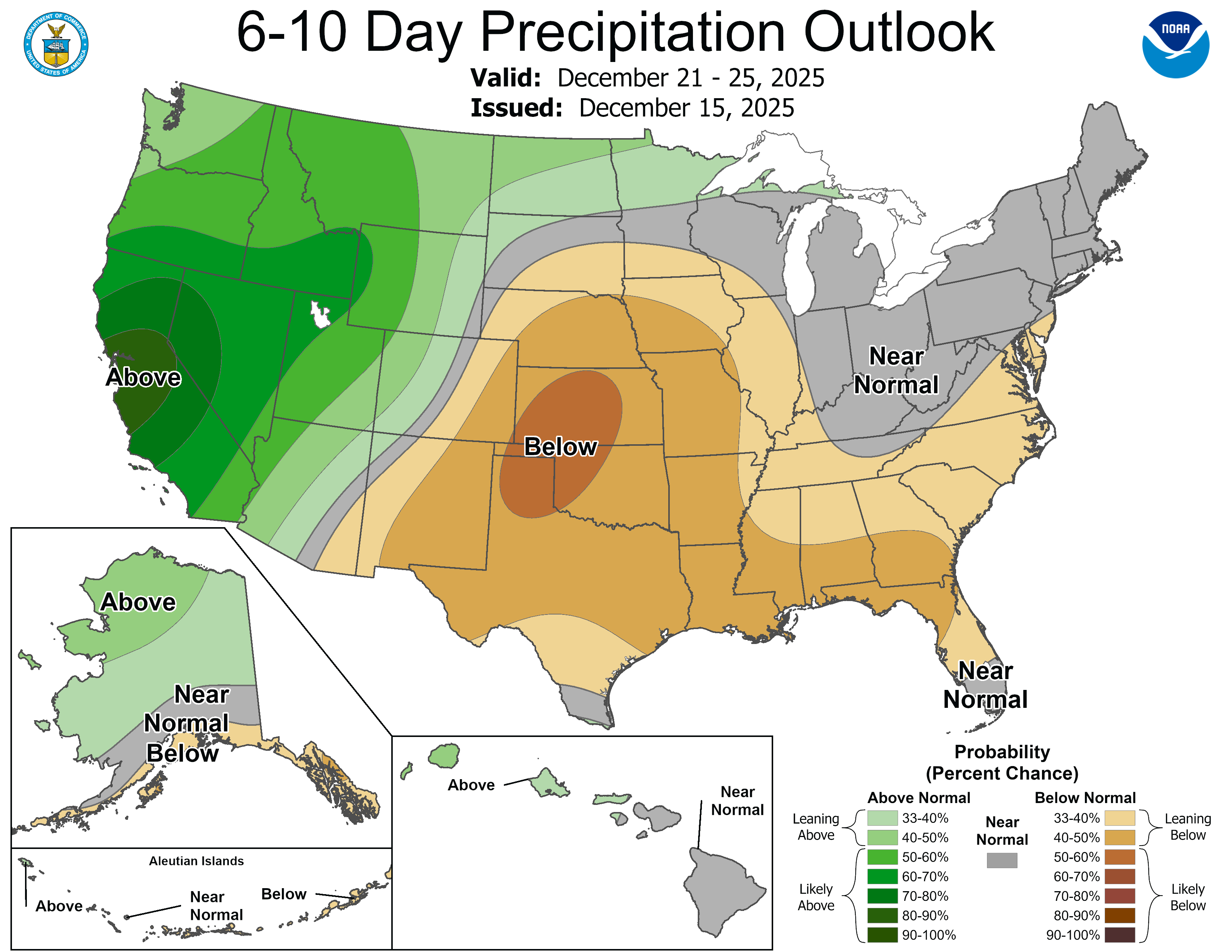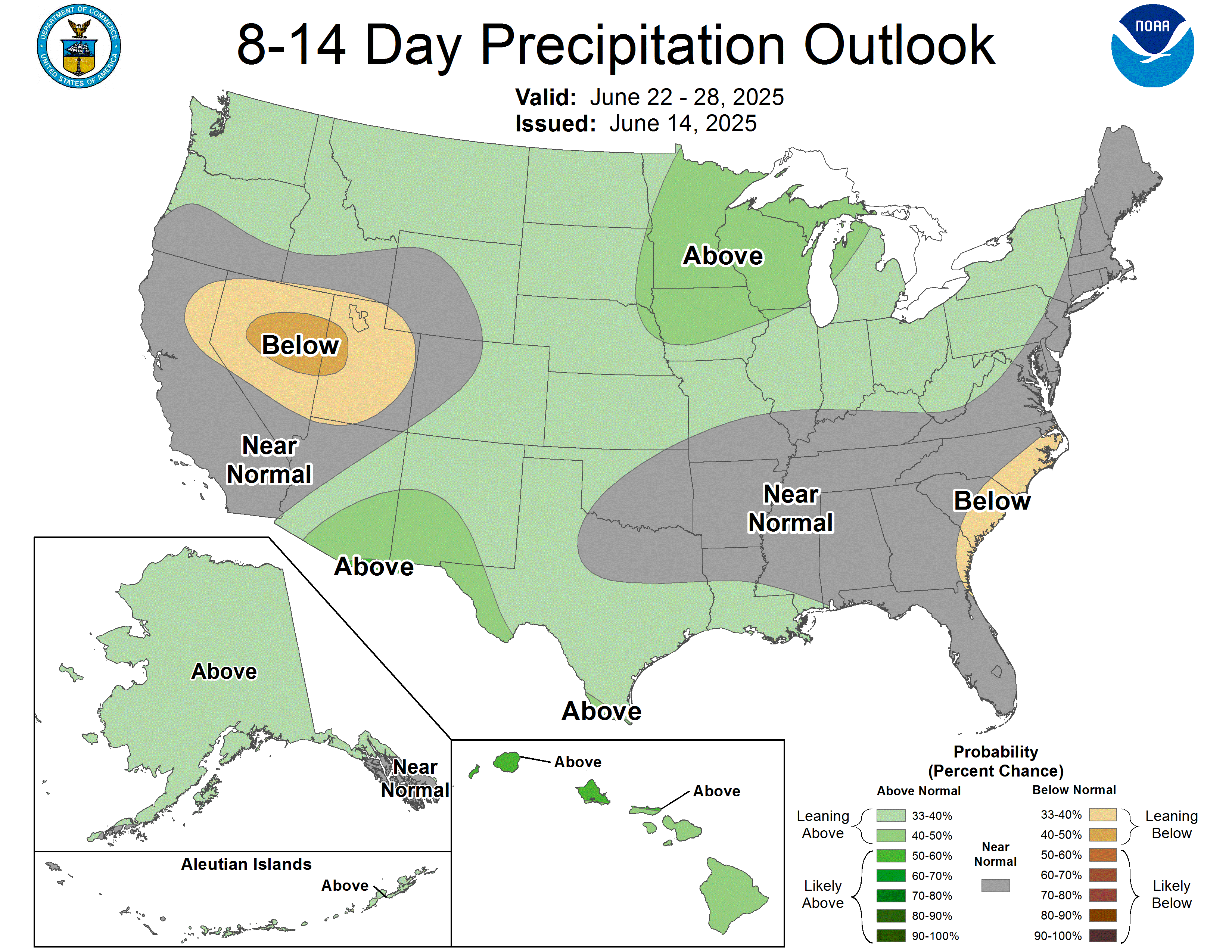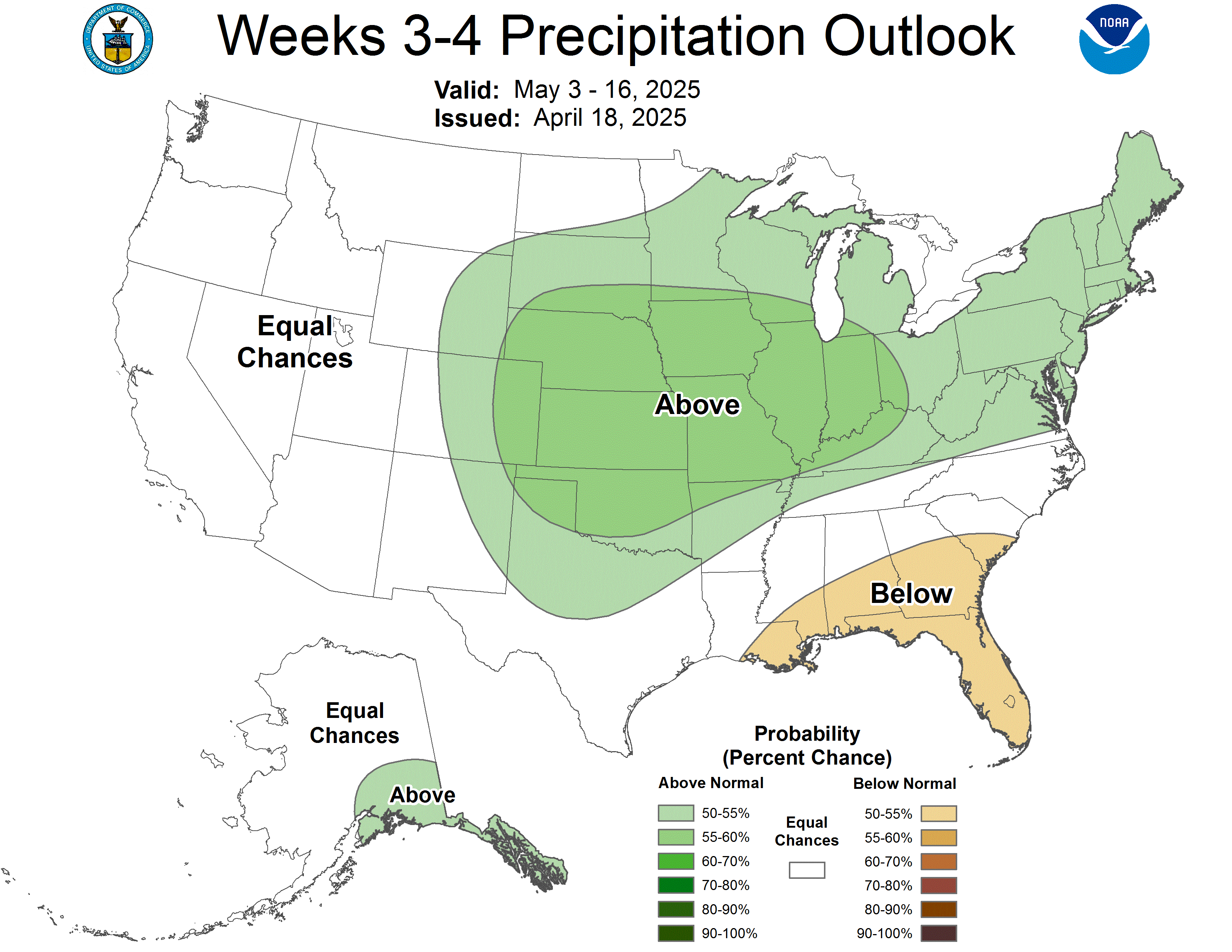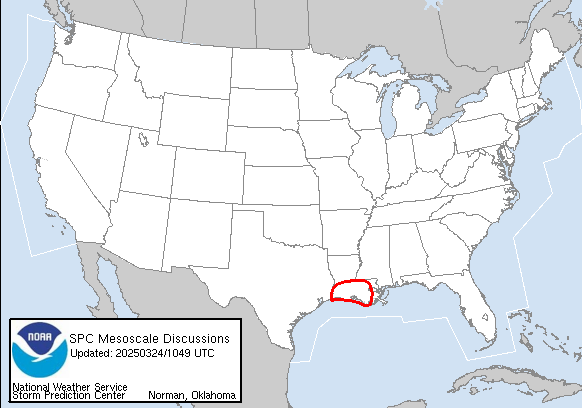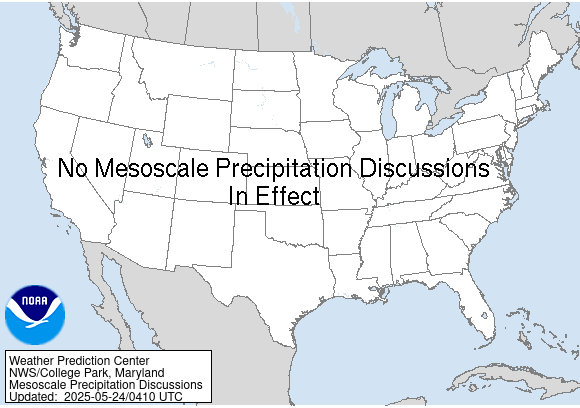Written by Sig Silber
Updated at 6:35 pm April 3, 2020 – “…Showers and thunderstorms from the Middle Mississippi Valley to the Mid-Atlantic coast this evening, scattered showers and storms also possible in the Rockies and Plains……A pair of storm systems to make for a wet and stormy Monday in the Plains and Mississippi Valley, additional storms possible across the South on Tuesday……Amplifying jet stream pattern to make for increasingly hot conditions in the Southwest and much cooler temperatures in the East…”

This article provides continuous updates for a variety of Weather and Weather-Related Threats as well as a general weather forecast. These are “Live” maps that continually update. Please pay attention to the Mesoscale Events maps — Mesoscale Events are potentially life-threatening situations.
Please share this article – Go to the very top of the page, right-hand side for social media buttons. Also, feel free to send this email to anyone you feel will benefit from it
Readers can scan through this article or jump to where they want to go via the links to the right. To get back to the Directory, hit the back arrow at the top of the URL bar on your screen. But in many cases, one of my Editors has graciously inserted a Return to Directory link to click so that is even easier. This is so high tech that I hardly believe it. |
|
CONUS Focal Points
Short Range Focal Points
Short Range Forecast Discussion NWS Weather Prediction Center College Park MD 402 PM EDT Sun May 03 2020 Valid 00Z Mon May 04 2020 – 00Z Wed May 06 2020
…Showers and thunderstorms from the Middle Mississippi Valley to the Mid-Atlantic coast this evening, scattered showers and storms also possible in the Rockies and Plains…
…A pair of storm systems to make for a wet and stormy Monday in the Plains and Mississippi Valley, additional storms possible across the South on Tuesday…
…Amplifying jet stream pattern to make for increasingly hot conditions in the Southwest and much cooler temperatures in the East…
This evening, a frontal boundary stretching from the Northeast to the Southern Plains will spark additional showers and thunderstorms. Some storms could be severe and produce heavy rainfall. Slight risks for severe weather and excessive rainfall have been issued for the Ohio Valley but the threat for severe storms extends as far west as the middle Mississippi Valley. Showers and thunderstorms will dot the Rockies and northern High Plains where some storms could also become severe.
The bulk of the precipitation across the Lower 48 the first half of the week will come at the hands of two storm systems in the Plains. One area of low pressure will generate scattered showers and thunderstorms across the Midwest on Monday. To the south, a more potent area of low pressure will be the catalyst for yet another round of severe weather from West Texas and the Mid-South to the southern Appalachians on Monday. The northern most feature will fizzle out on Tuesday with remnant showers possible in the Midwest and Ohio Valley, while the southern wave has the best chance to produce a broad area of potential thunderstorms from the Rio Grande River to the Carolina coast.
The weather pattern through the period can be summarized by the start of an increasingly amplified jet stream pattern over North America that will continue into next weekend. Starting out west, an intensifying upper level ridge over the Southwest means the return of sizzling temperatures to the region. Temperatures in the Desert Southwest will surpass the century mark by Tuesday and continue into Wednesday with the potential for record warmth. Much of California and the Great Basin will also bask in increasingly warmer temperatures. In the East, a deepening trough in the jet stream pattern will usher in a Canadian air-mass that will force temperatures to plummet from the Midwest to the Northeast. The Southeast will see the summer-like temperatures stick around through Tuesday but cooler temperatures should arrive mid-week.
Click here for the latest complete NWS/WPC Short Range Discussion. (Sometimes we provide part of or even the full discussion above and you can tell because it goes beyond the bullet points. We do that when we think the bullet points do not provide enough information. But the link just provided always takes you to the full discussion with updates twice a day and sometimes we are a bit late updating the bullet points so that link will get you there. You can tell if we are late by the time of the stamped update. This time of the year, NOAA does the updates at around 3 a.m. and 3 p.m. EST. We try to do the updates in our article as close to that as possible but it is not always possible.)
The map below shows the current wildfire risk which becomes more significant as we move into Summer. When you click on this image it takes you to the SPC Fire Warning Page and you get a set of maps for Days 1, 2, 3 – 8, etc. You can then click on those for more detailed information. The map is a bit blurry as I tried to make it a bit larger than the map provided by NOAA but should be able to see where the current wildfire risks are. But if you click on this map, you will get to see three maps that show the risk for different time periods.
Thunderstorm Risk
This should play out something like shown in this 60 Hour Forecast Animation
Here is a national animation of weather fronts and precipitation forecasts with four 6-hour projections of the conditions that will apply covering the next 24 hours and a second day of two 12-hour projections the second of which is the forecast for 48 hours out and to the extent it applies for 12 hours, this animation is intended to provide coverage out to 60 hours. Beyond 60 hours, additional maps are available at links provided below. The explanation for the coding used in these maps, i.e. the full legend, can be found here although it includes some symbols that are no longer shown in the graphic because they are implemented by color-coding.
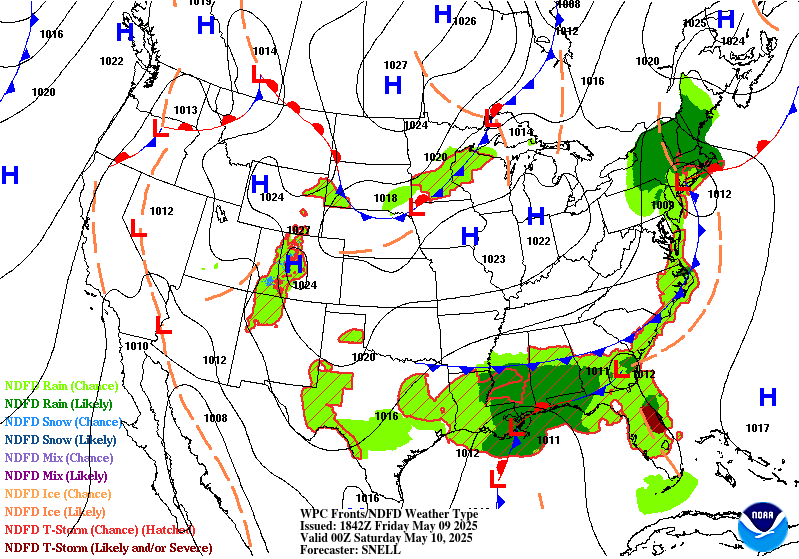
The two maps below break it down by day and may be easier to read.
Now, the Day One and Two CONUS Forecasts: These Maps Update Daily.
Day One CONUS Forecast | Day Two CONUS Forecast |
These graphics update and can be clicked on to enlarge. You can see where the weather will be | |
 | |
During the winter much of our weather originates in the Pacific. That is why we pay attention to the near-term history of storms arriving.
Temperature
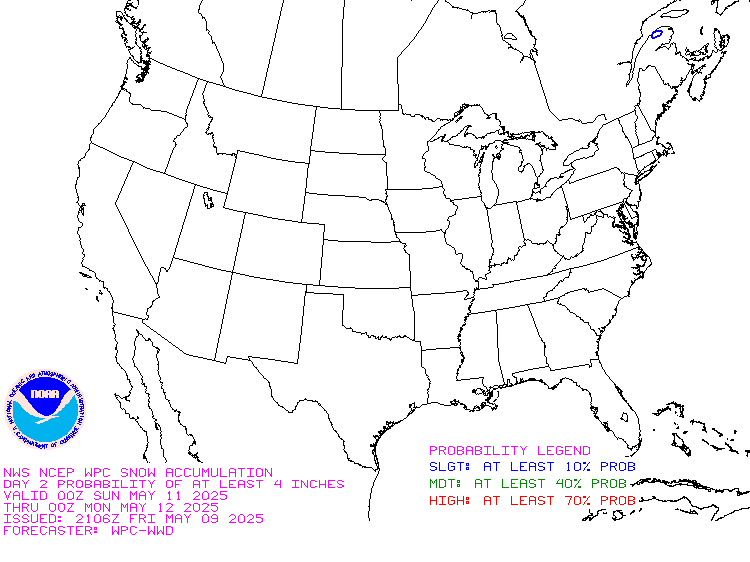
Water Vapor.
This view of the past 24 hours provides a lot of insight as to what is happening.
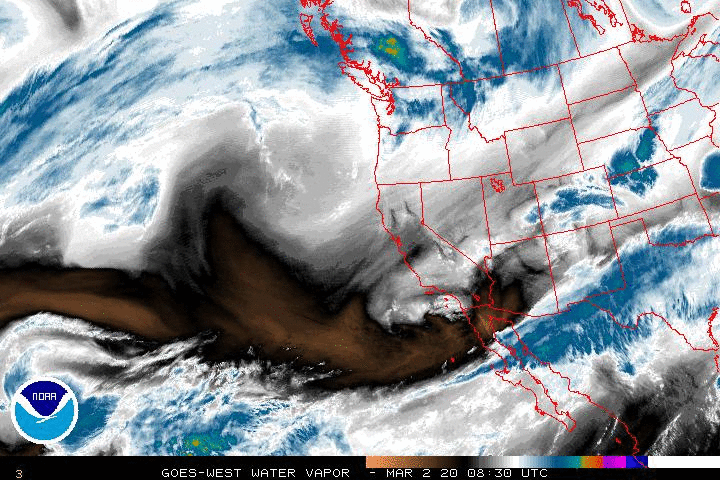
– Return to Directory
Day 3 – 7 Hazards
– Heavy rain across portions of the Central/Southern Plains, the Middle/Lower Mississippi Valley, the Central/Southern Appalachians, the Tennessee Valley, the Mid-Atlantic, the Southeast, and the Ohio Valley, Mon-Tue, May 4-May 5.
– Severe weather across portions of the Central Plains, the Middle/Lower Mississippi Valley, and the Southern Plains, Mon, May 4.
– Flooding possible across portions of the Middle/Upper Mississippi Valley, the Northeast, the Great Lakes, and the Ohio Valley.
– Flooding occurring or imminent across portions of the Southeast, the Mississippi Valley, and the Northern Plains.
– Flooding likely across portions of the Middle Mississippi Valley, the Great Lakes, and the Northern Rockies.
– Much above normal temperatures across portions of California, the Northern/Central Great Basin, the Pacific Northwest, and the Southwest, Thu-Fri, May 7-May 8.
– Much above normal temperatures across portions of the Central Great Basin, California, and the Southwest, Tue-Fri, May 5-May 8.
– Much above normal temperatures across portions of the Southern Rockies, the Southern Plains, the Central Great Basin, and the Southwest, Mon-Fri, May 4-May 8.
– Much above normal temperatures across portions of the Central/Southern Plains, the Central/Southern Rockies, the Central Great Basin, and the Southwest, Mon, May 4.
– Heavy precipitation across portions of mainland Alaska, Mon, May 4 and Thu-Fri, May 7-May 8.
Detailed Summary:
The medium range period will begin on Monday 5/4 with quasi-zonal flow across much of the U.S., with embedded shortwaves. But an upper-level high over northern Mexico and then a ridge building across the West Coast as another upper high moves in from the Pacific should help keep heights above normal through the period over the southwestern quadrant of the nation. This will lead to much above normal temperatures continuing for the Southern Plains on Monday, and record highs are possible there with temperatures nearing or even exceeding 100 degrees in parts of Texas. The Southwest should be consistently hot, with temperatures increasing a few degrees around midweek on, which could cause excessive heat to be a threat. Above normal temperatures are forecast to stretch farther west and north for the latter half of the week as the ridge builds, even up to the Pacific Northwest by Friday.
Early next week, an upper-level shortwave trough is forecast to move across the Northern Rockies to the Northern Plains by Tuesday, bringing chances for precipitation over those areas. Most precipitation should fall as rain, but higher elevation light snows in the Northern Rockies are expected as temperatures cool down with the trough. Farther east, model guidance has varied in terms of how much rain will fall and where, due to differences in their handling of the shortwave trough. There remains some potential for moderate to locally heavy rain in portions of the Northern Plains and the Upper Midwest early in the week. Windy conditions are also possible over the Rockies on Monday and the Plains Tuesday, but winds should remain below hazards criteria. Downstream of the trough, a better chance of heavy rainfall is forecast over portions of the Mississippi, Tennessee, and Ohio Valleys toward the Southern/Central Appalachians on Monday and Tuesday. Confidence in the latitudinal placement of the heaviest rain is not too high, but Gulf of Mexico moisture flowing into the vicinity of and overrunning a front is expected and could create a threat. Severe weather is also possible with this system.
Over Alaska, a low pressure system in the Gulf of Alaska should spread precipitation to the coast on Monday, and model guidance is in good agreement that portions of the Kenai Peninsula, Kodiak Island, and portions of the Alaska Peninsula could see enhanced precipitation totals, so added a Heavy Precipitation hazard area there. Later in the week, another low pressure system approaches, and the pattern is again favorable for heavy precipitation with an influx of moisture along the Gulf coast. Model guidance is more varied with the placement of the higher totals this time, but the same favored areas could see another round of precipitation by Thursday and Friday. Additionally, ice jam and snowmelt flooding are possible over portions of the mainland, though specific locations where these issues could occur are hard to pinpoint in advance. Temperature anomalies are not expected to be significant, though warmer than average temperatures should be persistent over the southwestern mainland.
(This is updated only during the week) Note the first list is weather highlights, this list is hazards. Not sure there is that much of a difference but they come from two different parts of NOAA. The Day 3 – 7 Hazards List does not update on weekends. But it is still useful as it remains valid for the period of time it covers. Of course, all forecasts are subject to change. Later we show a map of the hazards. Perhaps we should show them together.
Click here for the latest complete Day 3 -7 Hazards forecast which updates only on weekdays. It includes the full discussion which I do not update in this article but only present the highlights.
– Return to Directory
Ski Snow Reports
New Feature – Ski Reports. It is difficult to find reports that auto-update on-screen (and they are very long) but these links will get you to them – If you have additional suggestions make them in the comments section after every GEI Article and we may add those links. We will try to not have too much overlap as that can add to the confusion.

We will update the above map weekly but more frequent updates can be obtained here.
Snow Forecasts.
Day 1
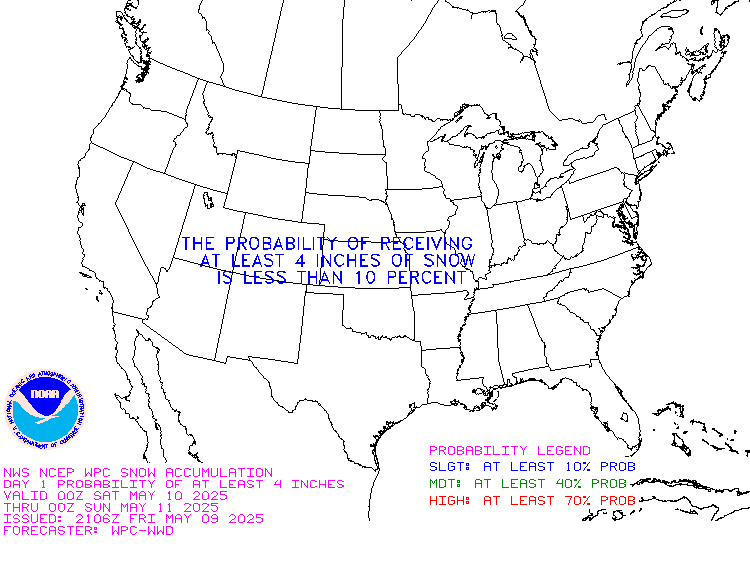
Day 2

Additional snow information can be found here and here.
– Return to Directory
Tropical Events
This is now beyond the time of the year we pay special attention to Tropical Events other than the Western Pacific.
So I am replacing the large with three small maps but you can click on them to get larger versions. Even though they are small maps you should be able to tell if there is activity and If I see activity I will make the map where there is activity full size.
| the Central Pacific. | the Eastern Pacific | the Atlantic and the Gulf of Mexico |
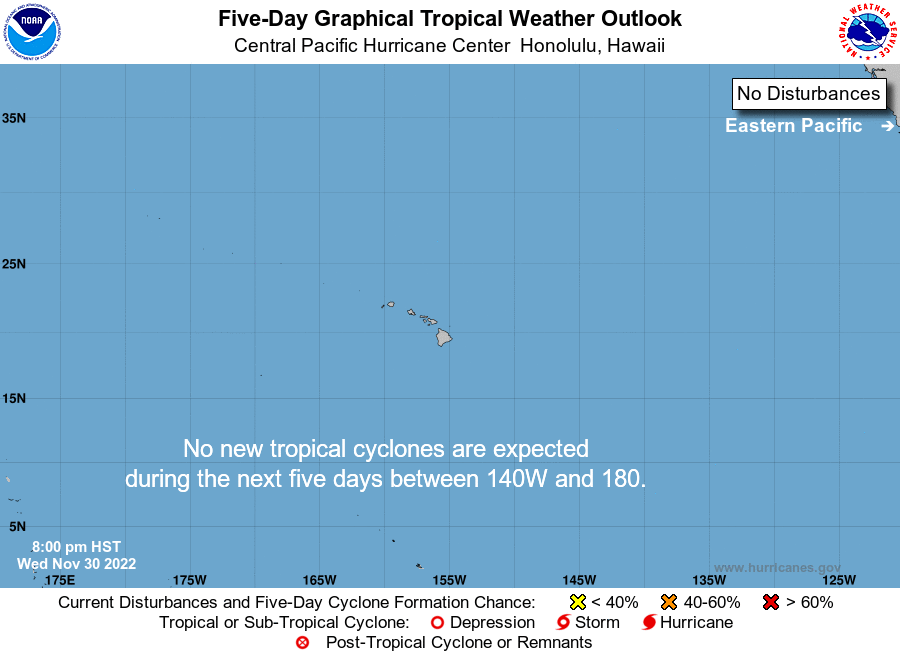 | 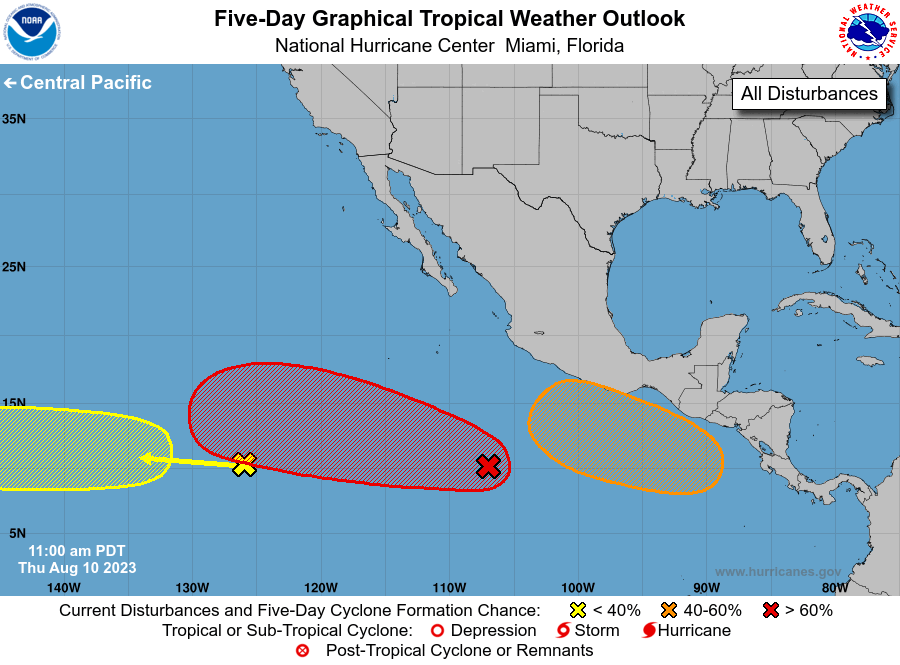 | 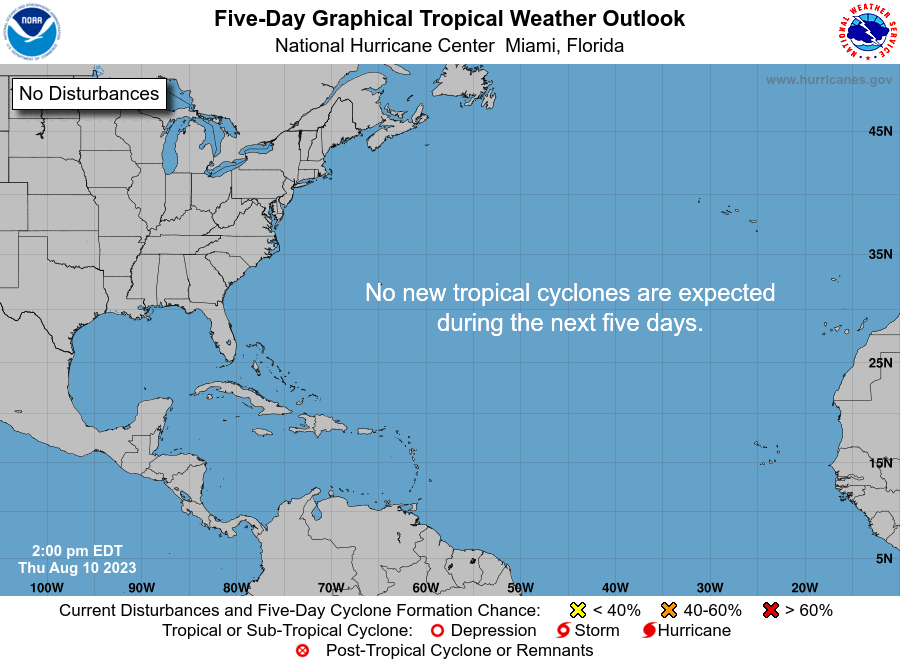 |
Updates on individual named storms can be obtained here.
And the Western Pacific
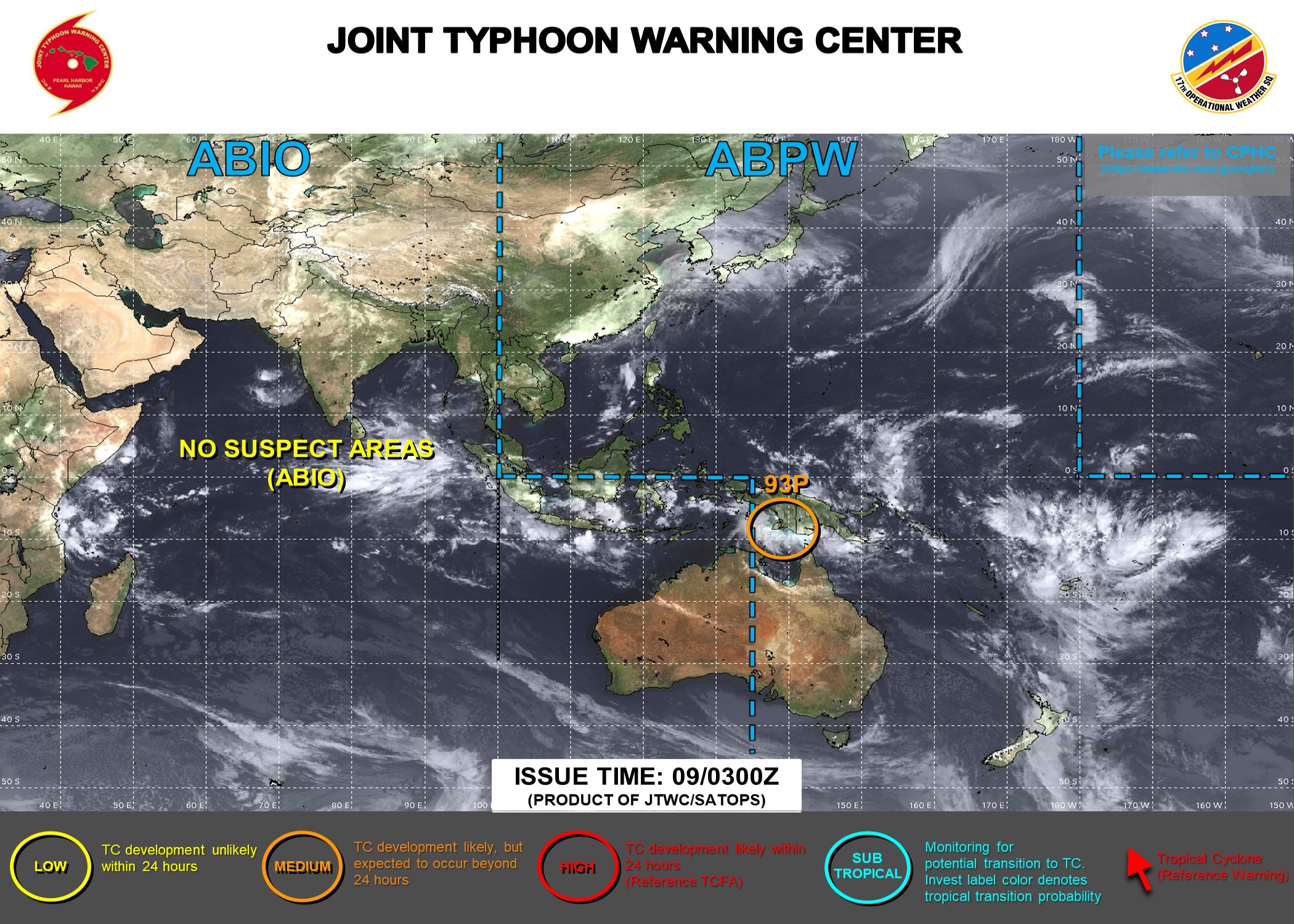
Week Tropical Forecast
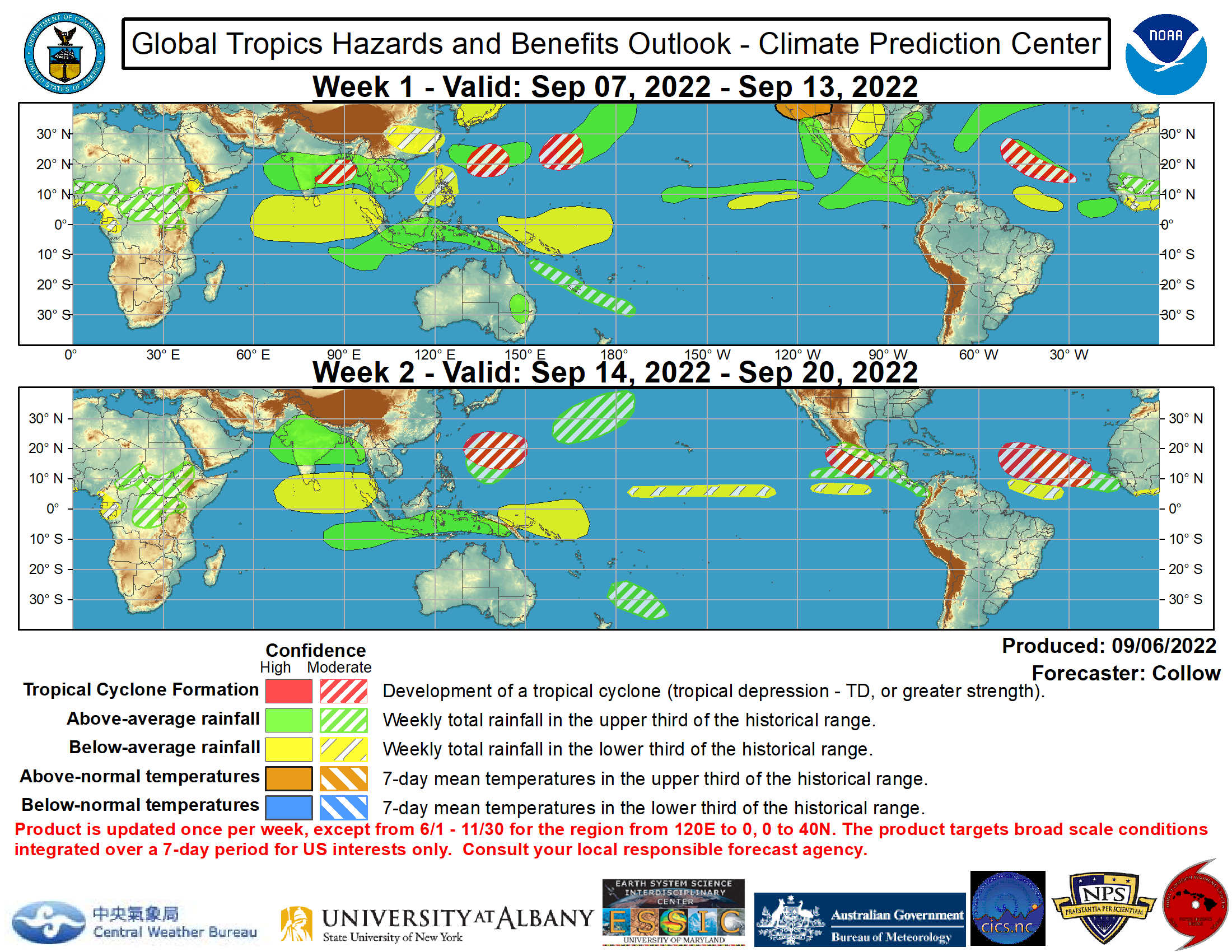
– Return to Directory
Intermediate-Term Weather Forecast
And shifting to the Alaska and CONUS Intermediate-Term Weather Forecast showing from left to right, Days 1- 5, 6 – 10, 8 – 14 and Weeks 3 – 4 You can click on these maps to have them enlarge, there are larger versions in the Addendum (More Weather the link is shown at the end of this section, and there are larger versions of these maps in the Addendum. Also, the discussions that go with these forecast maps can be found here (first two weeks) and here (Weeks 3 and 4).
First Temperature
And then Precipitation
For those interested in more detail, there are additional weather maps and information in the MORE WEATHER Addendum. The link to the Addendum is here. |
– Return to Directory
Mesoscale Events
The following map shows where mesoscale events are occurring or forecast. If you do not see any areas highlight on this map than there are no mesoscale events taking place or forecast. A mesoscale event is a very serious situation for a very small area and detailed information is provided for these events when they occur or are forecast. If a mesoscale event is shown, click on the map and more detail on the event will be shown.
Two different parts of the NWS issue this map and they are not always in agreement although they are pretty close. They (Norman Oklahoma and College Park Maryland) issue the alerts when they realize the need, so it is best to look on both maps and click one or both if you see areas highlighted.
This next map showing where “Headlines” have been issued for convection (and an animation of the recent movement of storms) should update and you should be able to click on to get additional details but if it does not update when you click on it, click here.
There is a slight difference between convection and thunderstorms. The below map shows where “Headlines” have been issued for Thunderstorms. You should be able to click on the map to get additional details but if it does not update, you can click here.
The map below shows the current wildfire risk which becomes more significant as we move into Summer. When you click on this image it takes you to the SPC Fire Warning Page and you get a set of maps for Days 1, 2, 3 – 8, etc. You can then click on those for more detailed information. The map is a bit blurry as I tried to make it a bit larger than the map provided by NOAA but should be able to see where the current wildfire risks are. But if you click on this map, you will get to see three maps that show the risk for different time periods.
– Return to Directory
Now the Day 3 – 7 Hazards Outlook Maps
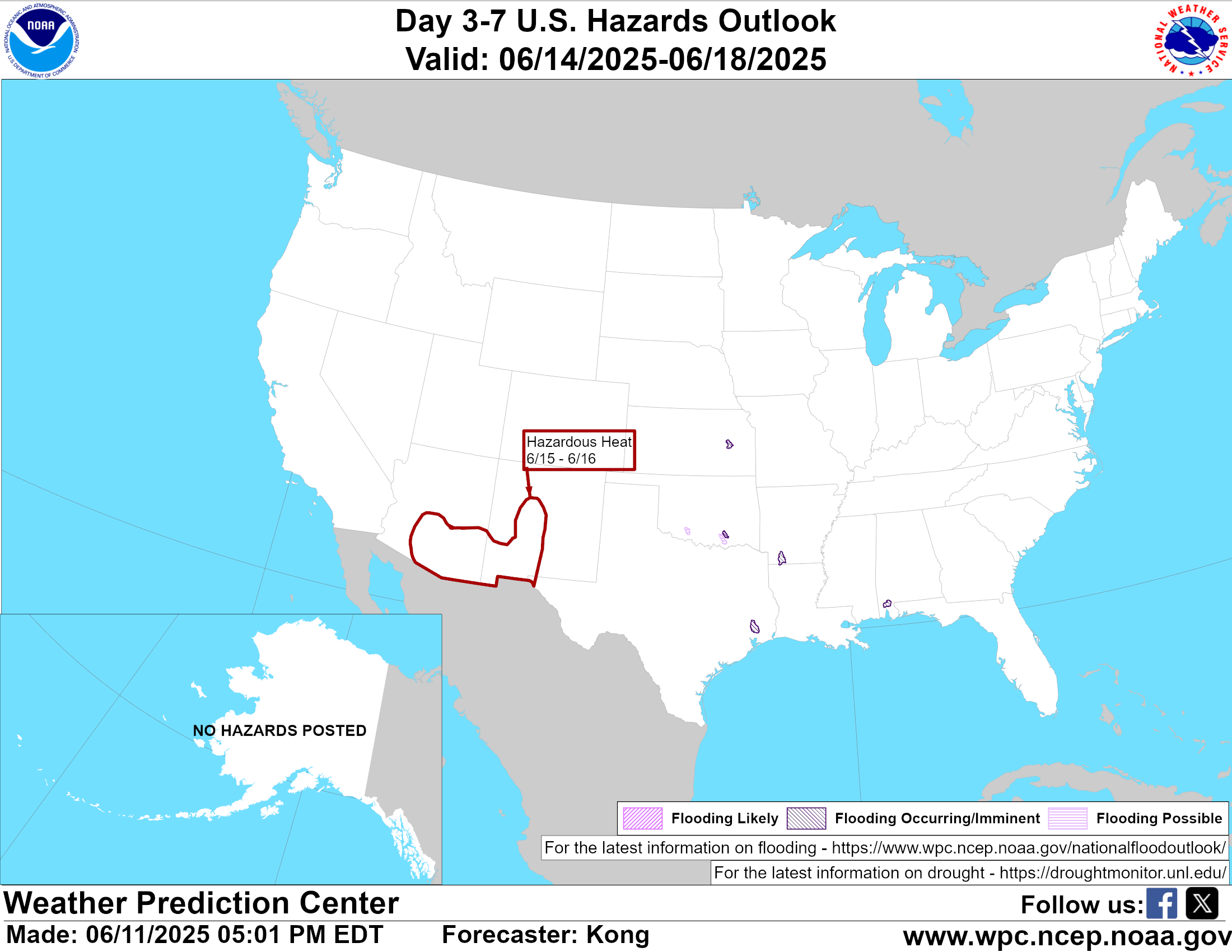
The orange and red outlined areas are what is most concerning of the forecasted Day 3 – 7 Hazards. This graphic does not update during the weekend. There is a discussion that goes with this graphic and you can access that discussion here.
The following is provided to help the reader relate the maps to how NWS will describe an area of the U.S.
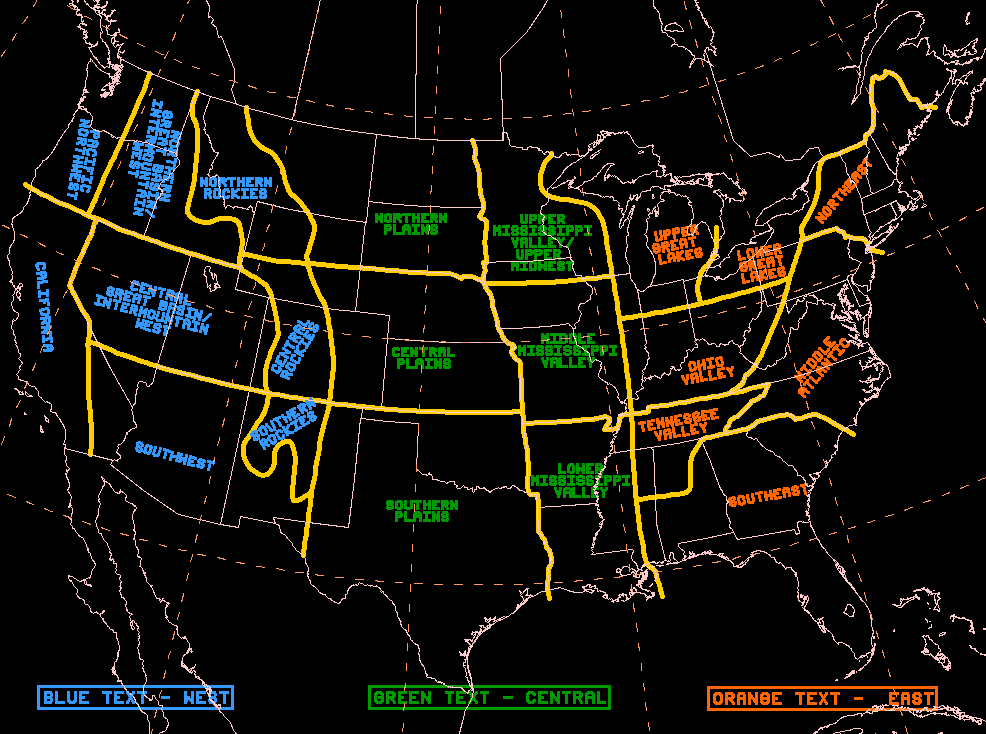
– Return to Directory
Now to our More Detailed Weather Report
This graphic is about Atmospheric Rivers i.e. thick concentrated movements of water moisture. More explanation on Atmospheric Rivers can be found by clicking here or if you want more theoretical information by clicking here. The idea is that we have now concluded that moisture often moves via narrow but deep channels in the atmosphere (especially when the source of the moisture is over water) rather than being very spread out. This raises the potential for extreme precipitation events.
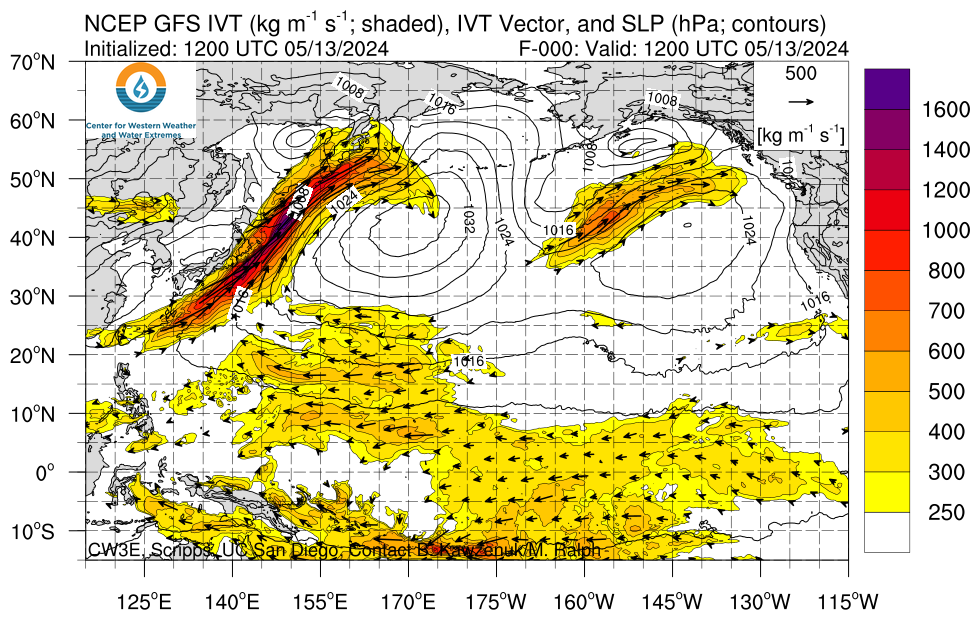
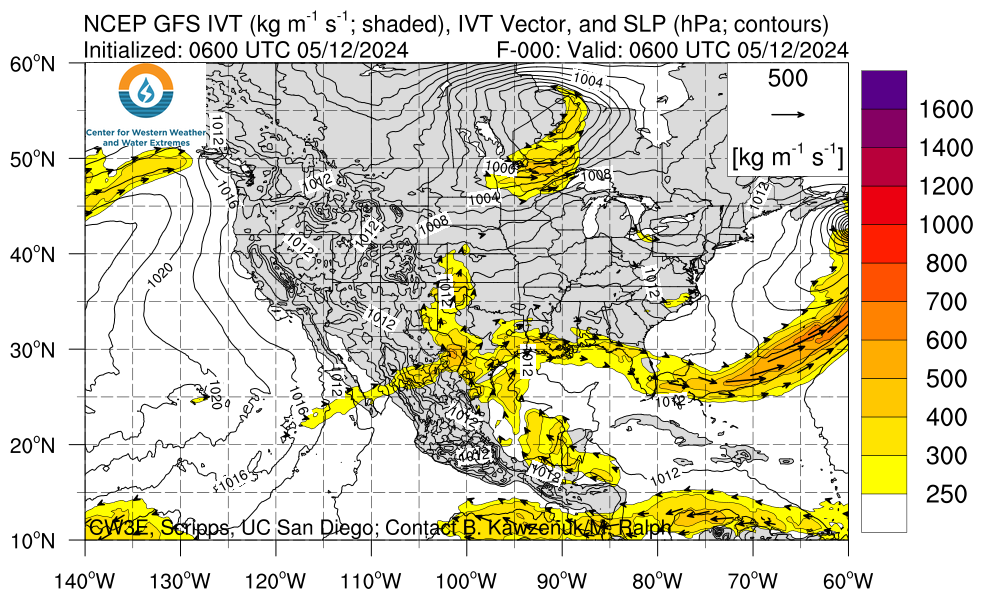
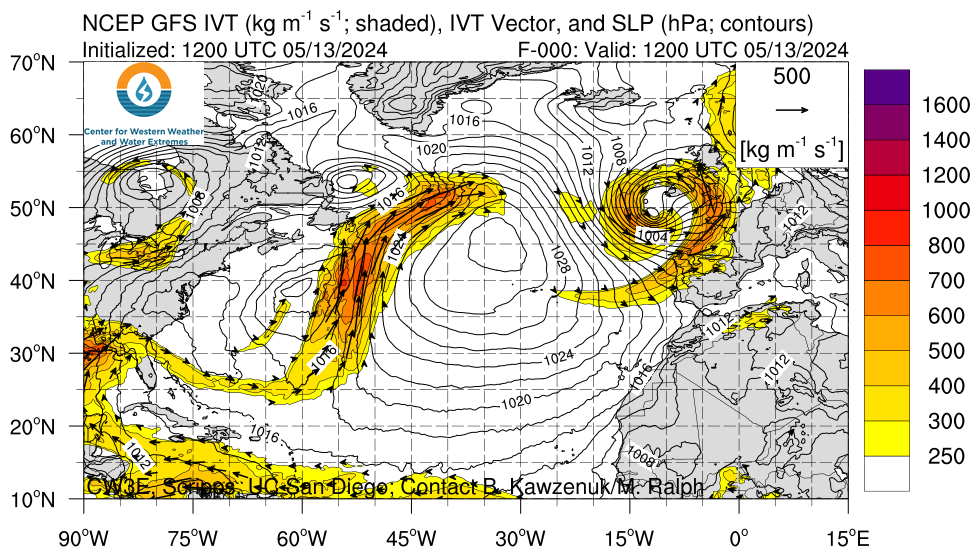
500 MB Mid-Atmosphere View
The map below is the mid-atmosphere 3-Day chart rather than the surface highs and lows and weather features. In some cases, it provides a clearer less confusing picture as it shows only the major pressure gradients. This graphic auto-updates so when you look at it you will see NOAA’s latest thinking. The speed at which these troughs and ridges travel across the nation will determine the timing of weather impacts. This graphic auto-updates I think every six hours and it changes a lot. Thinking about clockwise movements around High-Pressure Systems and counterclockwise movements around Low-Pressure Systems provides a lot of information.
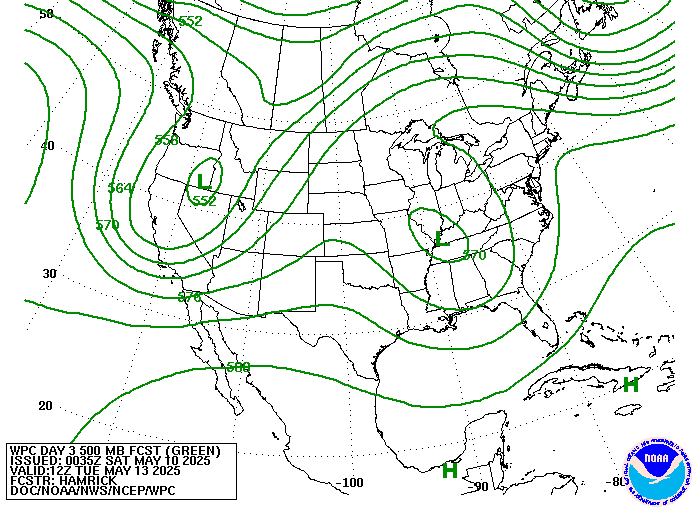
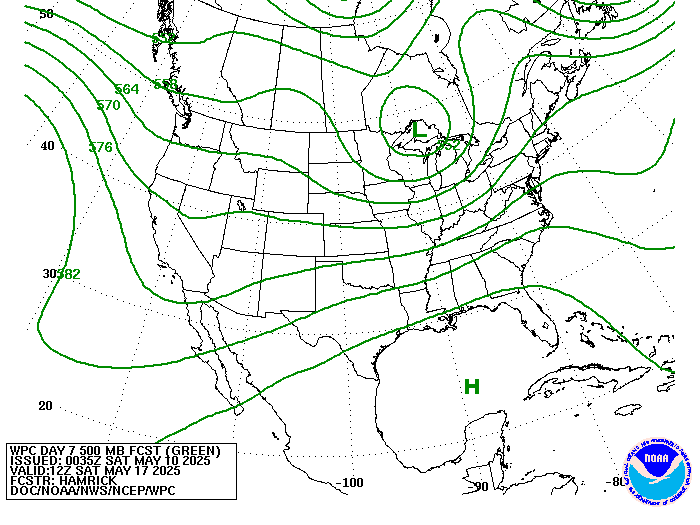
| Day 3 Above, 6 Below | Day 4 Above,7 Below | Day 5 Above. |
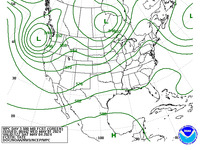 | 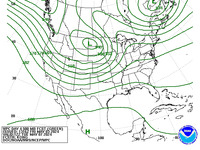 | 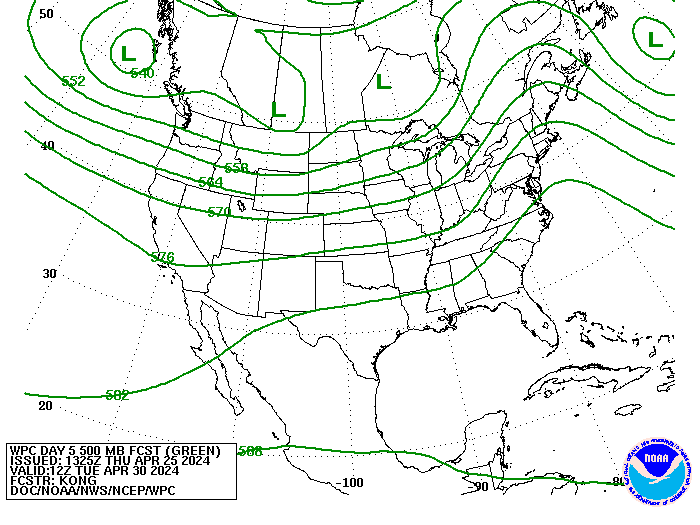 |
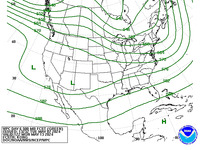 | 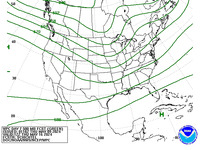 | 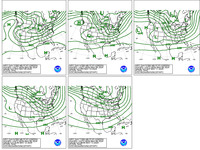 |
Here are the precipitation forecasts. First the cumulative for Days 1 – 3
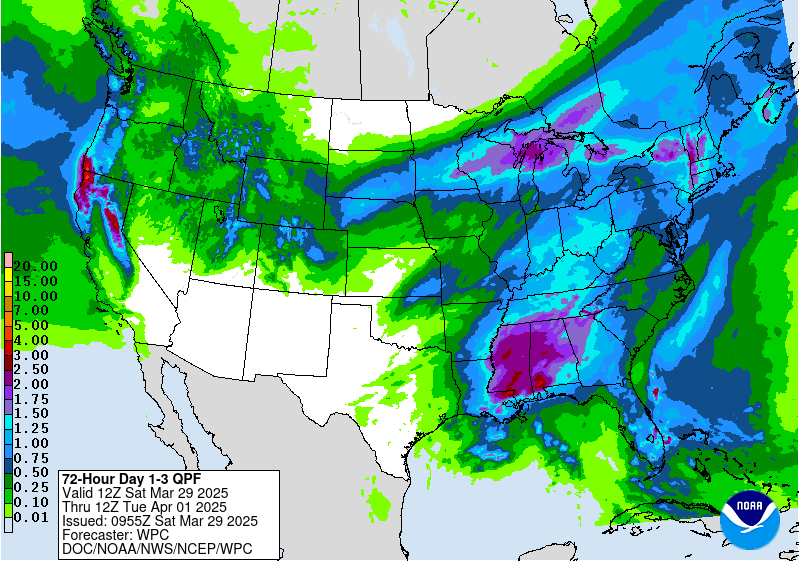
Then cumulative for Days 1 – 5
Then cumulative for Days 1 – 7
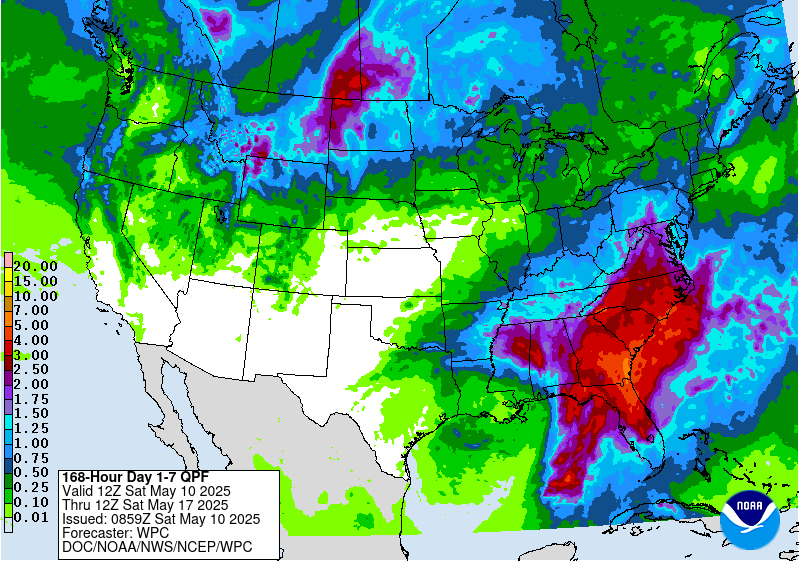
Now we look at the forecast for the Maximum Temperature three days out.
Looking ahead to next week.
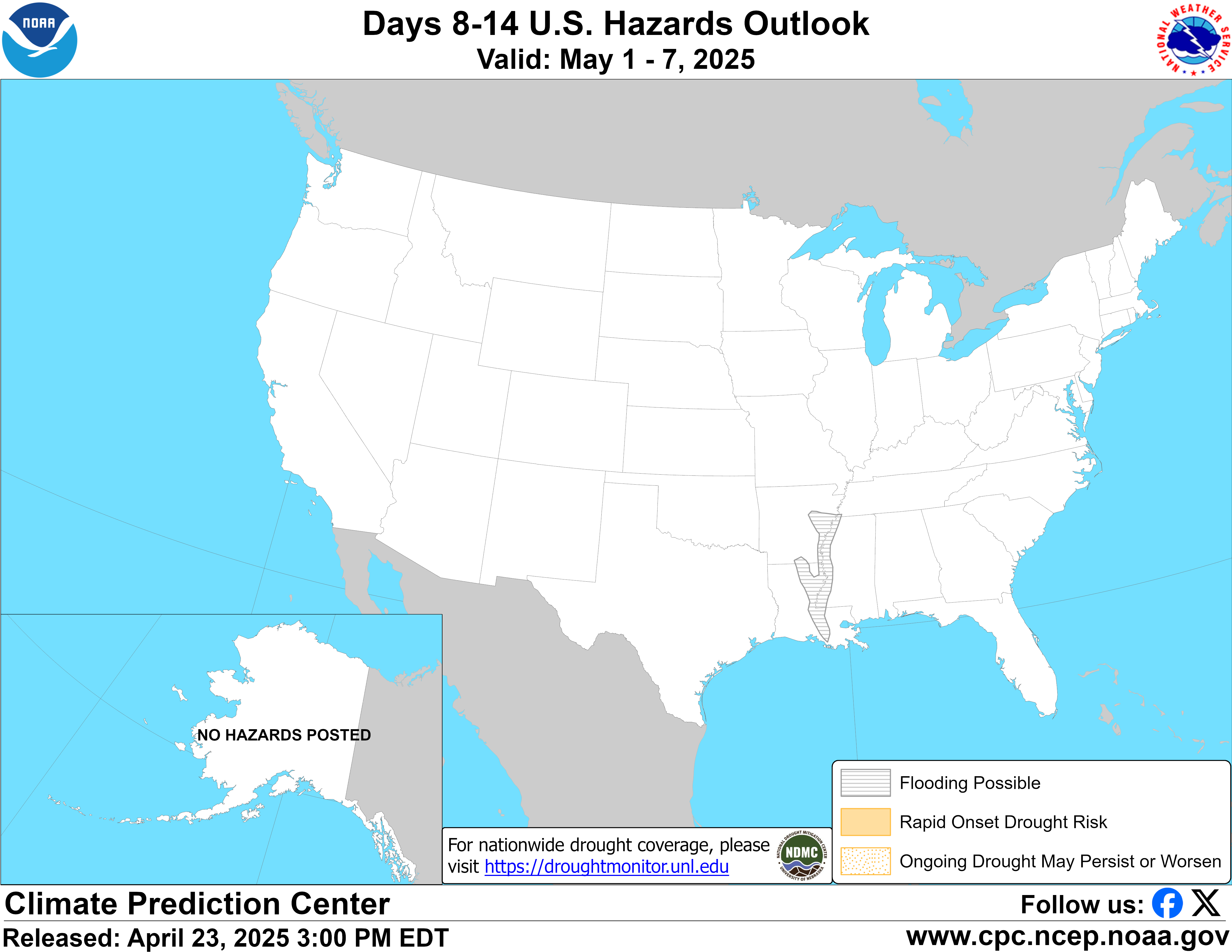
– Return to Directory
Additional Tools to Obtain Watches and Warnings
| Current watches, warnings, and advisories issued by the agencies of the National Weather Service. Hazards should show up in the various maps but the below links will take you to all outstanding watches and warnings in each category which may include some categories not covered in the various maps or difficult to find. So if there is a category of interest, click on the appropriate link below. |
|
Below you will see a number of different maps that are updated in real-time, making this a “live” report. If a part of one or more of the maps shows an area that is highlighted, you can click on it and get the full current report. By having the reader click on these active situations rather than having GEI do so, you will not miss any events in which you might have an interest and which we had not noticed and the page will not get cluttered with warnings, etc that have since expired.
Our focus here is events that are likely to last in the range of six hours but there can be longer or shorter events that are addressed by the Storm Prediction Center which is the main source of the information in this article. Long-term major events like a Hurricane are more likely to be in a separate article. But that may not always be the case. Since in general, all the links on this page transfer you into the NOAA system, in order to get back into this article you need to either close the tab to which you were transferred or click back on the tab that has this article.
| Live Warning Maps which If Severe Weather is Shown can be Clicked on to get more detail about these events. If there is a current warning shown on the map, click on the map for additional information related to the event. | These maps are updated as risks are identified. |
| This is the current graphic showing any mesoscale discussions (MD’s) which are in effect over the contiguous United States. Please read the description of the purpose of our MD’s for further information. Details on all valid MD’s may be found on our Current Mesoscale Discussions page. | 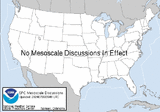 |
| Convective Outlooks | |
|---|---|
| This is today’s forecast for organized severe thunderstorms over the contiguous United States. Please read the description of the risk categories for further information. You may find the latest Day 1 Outlook available as well as all Outlooks issued today online. | Today’s Outlook |
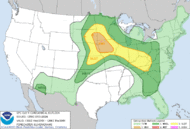 | |
| This is tomorrow’s forecast for organized severe thunderstorms over the contiguous United States. Please read the description of the risk categories for further information. The latest Day 2 Outlook is available as well as all Outlooks that have been issued today. | Tomorrow’s Outlook |
 | |
| This is the day after tomorrow’s (day 3) forecast for organized severe thunderstorms over the contiguous United States. Please read the description of the risk categories for further information. The latest Day 3 Outlook is available as well as all Outlooks that have been issued today. | Day 3 Outlook |
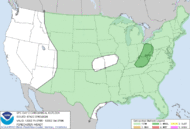 | |
| This is the day 4-8 forecast for organized severe thunderstorms over the contiguous United States. The latest Day 4-8 Outlook is available as well as all Outlooks that have been issued today. Note: A severe weather area depicted in the Day 4-8 period indicates a 30% or higher probability for severe thunderstorms (e.g. a 30% chance that a severe thunderstorm will occur within 25 miles of any point). | Day 4-8 Outlook |
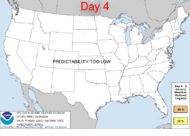 | |
| The Thunderstorm Outlooks depict the probability of thunderstorms across the contiguous United States in 4 or 8 hour time periods. The probabilistic forecast directly expresses the best estimate of a thunderstorm occurring within 12 miles of a point. The three probabilistic forecast thresholds are 10, 40, and 70 percent. | Thunderstorm Outlook |
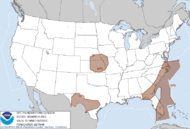 | |
| Fire Weather Outlooks | |
| This is today’s forecast for organized wildfires over the contiguous United States. Please read the description of the risk categories for further information about this product. | Today’s Outlook |
 | |
| This is tomorrow’s forecast for organized wildfires over the contiguous United States. Please read the description of the risk categories for further information about this product. | Tomorrow’s Outlook |
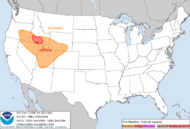 | |
| This is day 3-8 forecast for organized wildfires over the contiguous United States. Please read the description of the risk categories for further information about this product. | Day 3-8 Outlook |
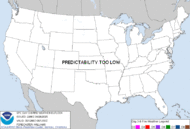 | |



